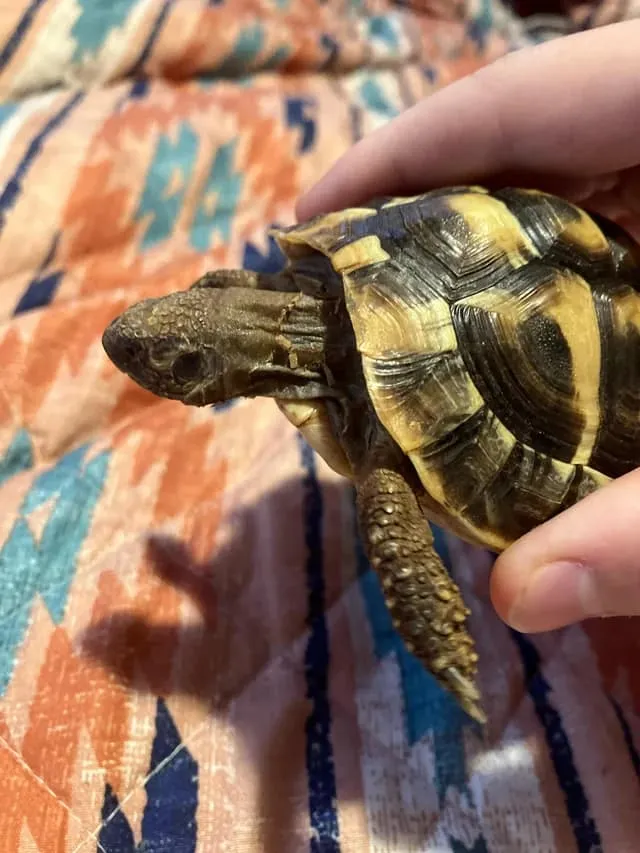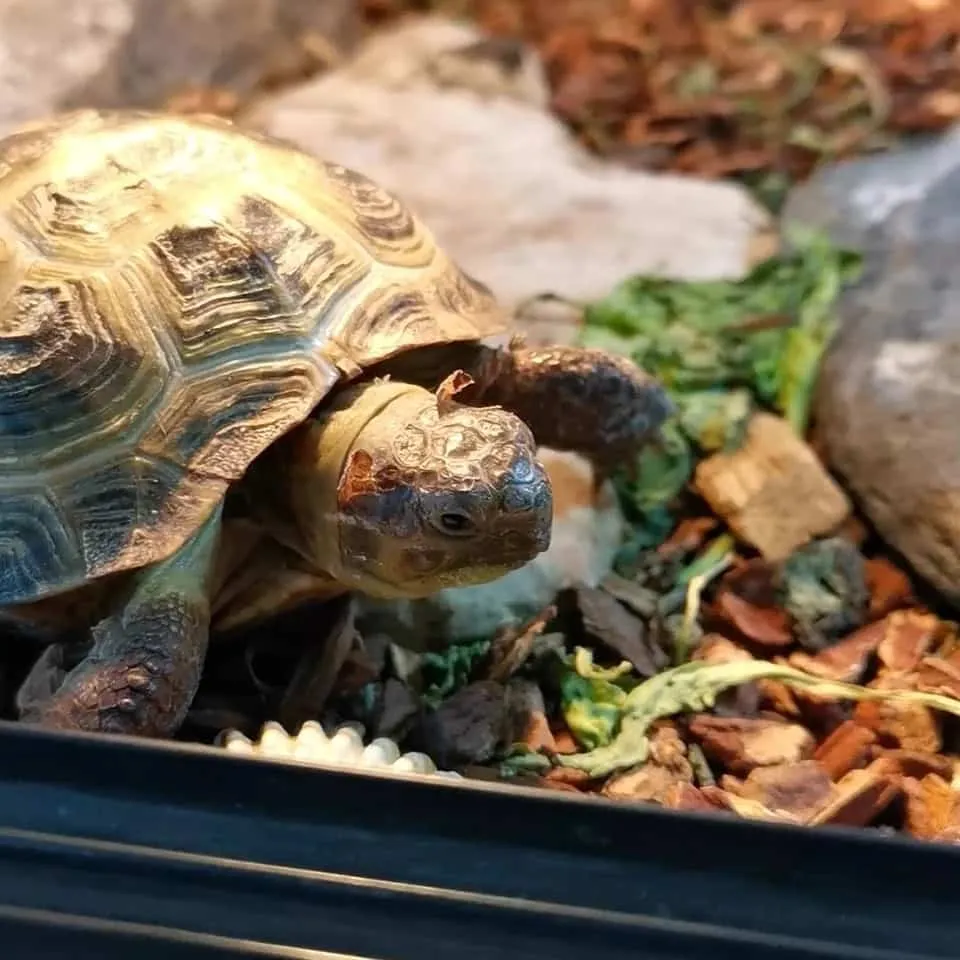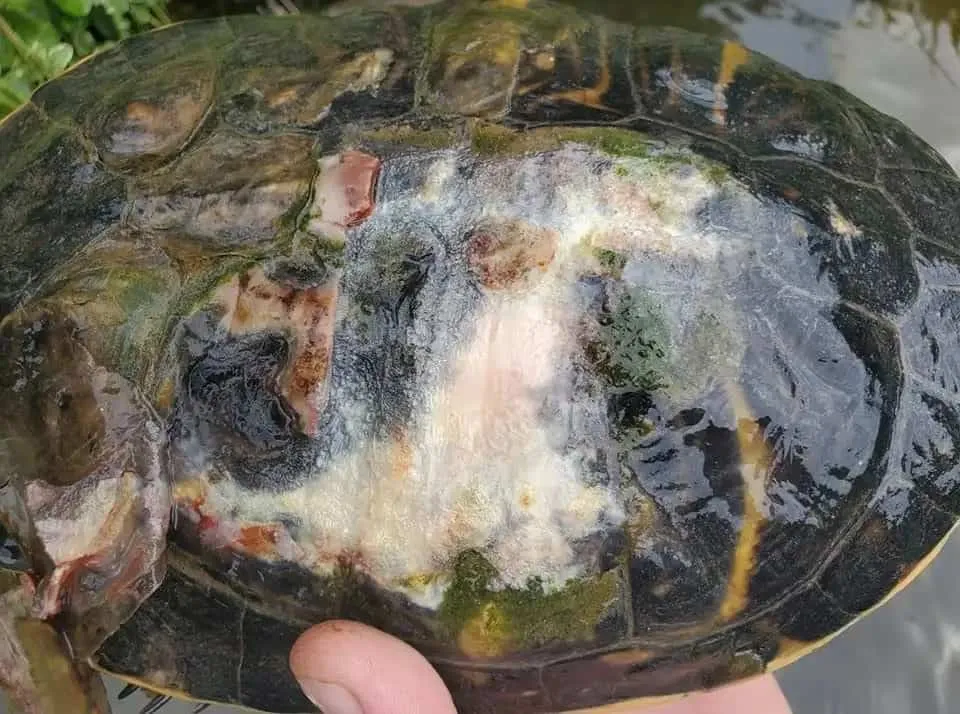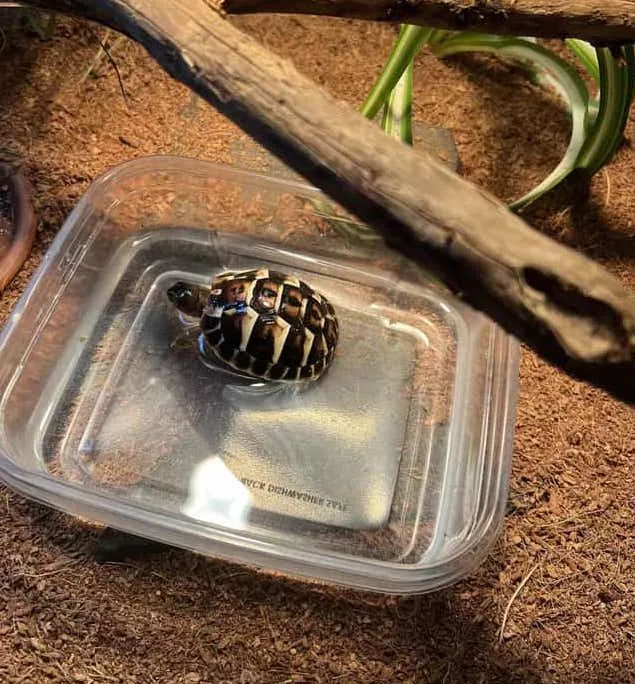If you are a tortoise owner and your tortoise is shedding skin, you are probably wondering, “Do tortoises shed?”, Is this a natural process, or is there some growth and renewal? Do not panic since most tortoises do that.
Yes, tortoises do shed skin, and it is considered entirely normal. Tortoises have Scaly skin, which is why they start shedding their skin after some point.
A lot of people, when they become tortoise owners, get confused about whether their tortoise has some problem if it is shedding skin.
There are a few other interesting facts about the shedding process of tortoises too.
Why do Tortoises Shed Skin?
Tortoises have layers of skin on their body.
The topmost layer of a tortoise’s body has skin that is dead.
This dead skin starts shedding off on its own after a point, only to replace new fresh skin from underneath.

The shedding of skin mostly happens during the growing stage of a tortoise. During this time, a tortoise grows and develops a giant shell and body.
In addition, tortoises shed their skin when they have certain infections. These infections form on the outer part of the skin.
The skin then starts peeling off from the body on its own so that new fresh skin can be formed with no sign of infection on it.
Thus, it is important for tortoises to shed their skin to grow and get rid of any disease.
How do Tortoises Shed Skin?
Tortoises shed their skin in parts.
This means that there is no particular part that will start shedding skin, but the skin will start coming off out of random places.

This is because of the tortoise shell.
The shell consists of a prominent place on a tortoise, and since the shell is the hardest part, the skin does not come out in one single piece like how it does for other animals.
How Often do Tortoises Shed?
Tortoises keep shedding their skin regularly. They keep shedding for a few months.
This is a constant process where tortoises shed skin to get fresh new skin to stay healthy and fresh.
Tortoise shedding can vary from one tortoise to another as every tortoise is different. Usually, it takes about 1-2 months for the time period for the tortoise to shed.
It is normal if your tortoise shedding takes more than two months. Just focus on providing the tortoise with good nutrients.
Note that a tortoise starts to shed lesser and lesser as it grows into an enormous tortoise.
4 Signs of Tortoise Shedding
There are a lot of signs that tortoises show when they’re shedding. Some of them are:
1 – Active & Conscious
Tortoises will be super active during the whole period because of the irritation. They will stay up more than usual.
Make sure to provide them with tortoise toys or other stuff to keep them busy, or they might get irritated if they’re kept bored at this stage.
2 – Translucent Layer peeling off
The Scutes will have a translucent layer on them.
It will look as if the plastic is coming out from the upper side of the shell. Sometimes, you will find these plastic pieces inside the tortoise bedding.
3 – Getting Bigger
This is mostly when the tortoise is growing into a bigger one.
During this period, even the shell of the tortoise tends to grow into a bigger shell.
4 – Color
The color of the shell and the skin will start becoming dull.
In addition to that, a whitish-grey layer will start forming from where the tortoise is shedding.
Do Tortoises Shed Their Shell as Well?
No, tortoises do not shed their whole shells but the upper skin of the shells, called Scutes.
These Scutes come off in perfect shape and are translucent in color. They might seem like plastic at first, but they are not.

Let us discuss this in detail.
What is Scute Shedding?
The bony upper part of a tortoiseshell is known as Scute. Scutes protect tortoises from their predators and are very hard to crack.
As the name suggests, Scute shedding is the plastic-like structure coming off from the Scutes of a tortoise to form a new layer that is healthy and fresh for a tortoise.
The process is somewhat similar to an average person cutting their fingernails to clean the body.
This is to make sure the shell of the tortoise stays healthy and does not form any infections.
Once the outer layer gets peeled off, the color of the skin and the shell will become more vibrant than before.
Before anything, let us know what other reasons Scutes can come off.
Why Does Tortoise Shell Rot?
Shell Rotting is an infection that can cause the Scutes of the shell to come off.
This is different from a tortoise shedding Scutes. This is a health problem that can cause the scutes to come off unnaturally, making the bones inside the shell visible.

This is a critical condition that should be treated immediately.
It can happen because of bacterial infection. This mostly happens when the tortoise is not kept in a clean environment.
Treatment for Shell Rot
You can treat the rotting of a shell with a lot of antibiotics.
But it is better to go and see a local vet since this is a critical health condition.
Difference Between Tortoise Shell Rot and Shedding
A tortoiseshell rot and shedding of Scutes might seem similar in a lot of ways but are two completely different things.
Let us talk about how to figure out the difference between them both:
Color
The color of a shell that is shedding is mostly white-greyish in color. At the same time, the color of a rotting shell will mostly appear in a reddish-white form.
Behavior
When a tortoise is shedding, it becomes energetic. At the same time, a tortoise with a rotting shell will tend to sleep more than often.
Smell
A tortoise that has a rotting shell will give out a foul odor.
However, there will not be any strange smell when a tortoise is shedding.
Visible Health
You will be able to notice that during the process of shedding, Scutes that come off will leave fresh and new skin underneath.
However, when the Scutes come off from a rotting shell, bones and other infections will be clearly visible to the human eye.
3 Benefits of Shedding
There are a lot of benefits behind tortoise shedding. Let us take a look at some of them:
1 – Help boost growth
One of the most beneficial and common parts of shedding is that it helps in the overall growth of the tortoise.
When the new scoots come from underneath, they are bigger than the ones peeled off.
2 – Removing Bacterial infections
Shedding also helps in getting rid of bacterial infections as the tortoises get rid of those infections along the skin that get peeled off.
3 – Removal of Algae
When the skin gets peeled off, the algae that get formed on the tortoise also gets removed. This helps your tortoise in staying active.
What Can I Do to Help the Tortoise Shed its Skin?
Even though it is your pet tortoise who has to go through the process of shedding, there are some things that you can take care of while your tortoise is going through the process of shedding.
Those are:
- Proper Diet
Make sure to provide your tortoise with a rich nutrient diet.
You can feed them with fruits and greens to make sure they are healthy and have the power to shed their skin.
You can also include more food items that have Vitamin E in them.
- Clean Tortoise Bedding
It can get messy during the process of shedding a tortoise.
During this process, the place where you have kept your tortoise can get dirty because of the shedding.
Make sure to clean the tortoise bedding properly so that infections don’t stop growing in the bedding.
- Maintain the temperature
Maintain a temperature of 75° F to 85° F more when your tortoise is shedding.
This is to make sure the tortoise stays active during the process so it can be faster.
- Supervise
Make sure to supervise your tortoise throughout the day.
This is to make sure that the tortoise does not grow any infection during the process.
Which Tortoise Breed Sheds the Most?
Now, let us talk about the types of tortoise and their shedding schedules.
- Sulcata Tortoise Shedding
Sulcata tortoises are known to shed the least among all the breeds of tortoise.
However, this does not mean that they do not shed at all.
Even Sulcata tortoises regularly shed, just that they do not shed as much as other breeds of tortoise do.
- Russian Tortoise Shedding
Russian tortoises can shed moderately.
They shed every 3-4 months. The process keeps on going as they grow and become big.
- Hermann Tortoise Shedding
Hermann tortoises can be shed like a local tortoise.
They shed while growing. The shedding becomes lesser as they grow into bigger tortoises.
- Galapagos Tortoise Shedding
These tortoises are shed more frequently.
Most of the Galapagos tortoises shed their skin in a few months.
This is mostly because they do not stop growing till the later age of their life.
How do I Make My tortoise Shed Faster?
1- To make your tortoise shed faster, prepare a bucket of lukewarm water. Keep giving the tortoise bath with that lukewarm water.
2- This will soften the outer skin and help the tortoise in shedding the skin faster.
3- In addition, this will help remove the skin that is left and is stuck somewhere on the body of the tortoise.
4- Make sure not to pull the skin out on your own; let the tortoise do its job.
5- For better results, mix a little salt in lukewarm water. This will help remove the old dead skin from the tortoise’s body.
6- Salt will also help get rid of any infection forming on the new skin from underneath.

Difference Between Healthy Shedding and Unhealthy Shedding
If you are concerned about the shedding of your tortoise, let’s differentiate between healthy tortoise shedding and unhealthy tortoise shedding:
A healthy shedding is when the skin coming from underneath looks vibrant and fresh. This is when the skin gets peeled off by the tortoise on its own.
Whereas, if the tortoise is forced to peel off or its skin is struck by a sharp object causing the skin to peel off, it is called Unhealthy shedding.
FAQs
What Not to Do When Your Tortoise is Shedding?
One thing to avoid doing while the tortoise is shedding is to pull the skin or the Scutes off the tortoise.
This is a natural process, and the skin will get peeled off on its own without any external support.
Pulling the skin off should be avoided since it can cause the skin underneath to get pulled off as well, and this will only result in hurting the tortoise
What to Do if a Tortoise is Shedding a Lot?
Try to maintain a proper diet for the tortoise, which has more Vitamin E. It is entirely normal for a tortoise to shed a lot.
Every tortoise has different traits. The shedding gets lesser and lesser once the tortoise becomes big enough.
How is Tortoise Shedding Different From Other Reptiles?
When tortoises shed, the skin comes off from random places, unlike snakes, where the skin comes out in one whole piece.
In addition, tortoise shedding can take weeks and sometimes months.
At the same time, other reptiles take a lot less time than that.
Where Does the Tortoise Shed its Skin From?
Following are places where the shedding happens: Tortoise shedding skin on the head, tortoise shedding skin on the tail, and tortoise shedding on the neck is normal and is considered healthy.
Conclusion
In the end, I hope you understand that there is nothing with the tortoise if it is shedding.
This only means that the body of the tortoise is healthy.
If your tortoise is not shedding, get him to see a local Vet in your area, as that could be a problem. Your tortoise might have an inner infection.
I hope you liked the article. If you have any doubts or a story to share, let me know in the comment section below, and I will try to get back to you as soon as possible!
